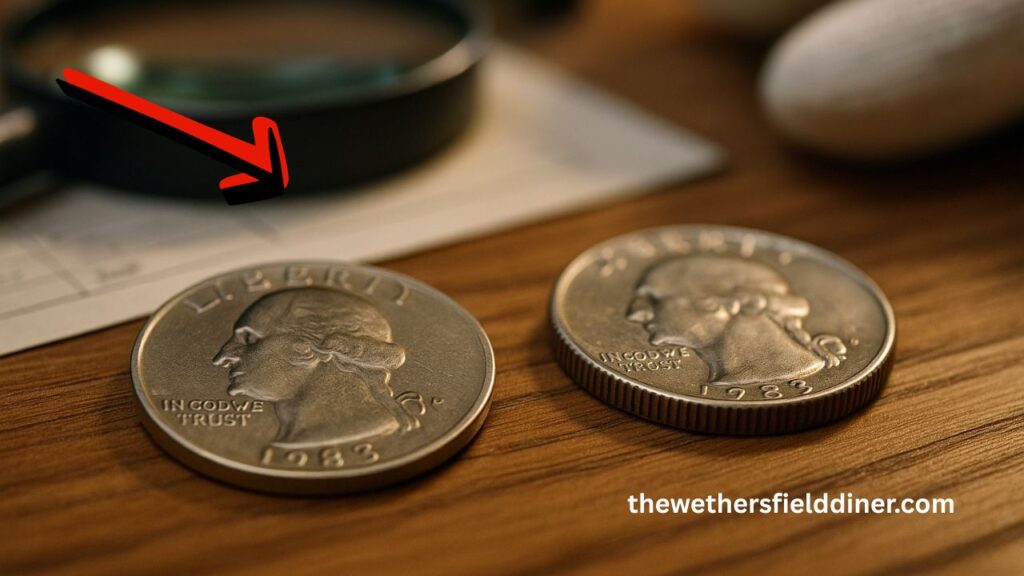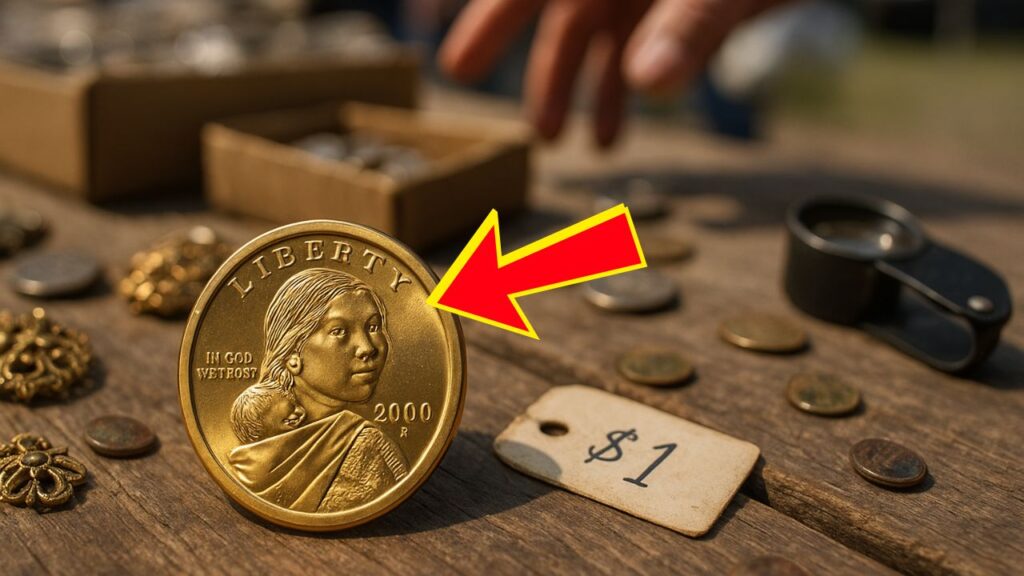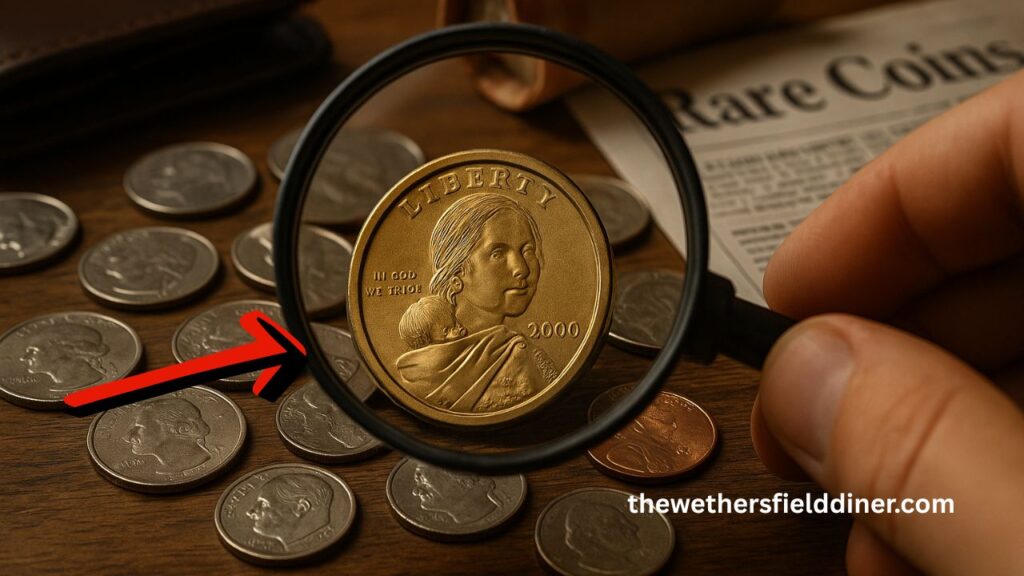In mid-2025, broadstrike error coins—Washington quarters from 1983 minted in Philadelphia (no mintmark) that lack the typical reeded edge—are gaining traction among numismatists.
These coins, if struck without the retaining collar, result in smooth edges and a flattened, elongated appearance, known as a broadstrike. These modern error coins are increasingly being recognized as valuable collector items.
Most smooth-edged quarters in circulation are simply worn or damaged. But true broadstrike errors are wider, thinner, and have faint rims with normal designs that may appear weaker due to metal spread—distinctive signs for collectors.
Value Guide: 1983‑P Missing Ridges Quarter vs. Standard Issues
| Variety | Edge Feature | Estimated Value Range (2025) |
|---|---|---|
| Standard circulated (1983‑P) | Reeded edge | ~$0.26 |
| Uncirculated standard (MS 65) | Reeded edge | $7 – $45 |
| High grade uncirculated (MS 67) | Reeded edge | Up to $58 – $650 |
| Broadstrike error (missing ridges) | Smooth edge | $30 – $125+ |
| Premium graded broadstrike (MS66+) | Smooth edge | $150 – $600+ |
A basic broadstrike 1983‑P quarter might sell in the $30–$125 range, but coins graded at MS66 or higher with well-defined details have fetched as much as $600+
How Broadstrike Errors Occur & Why They Matter
- A broadstrike error occurs when a coin blank is struck without a collar, allowing metal to flow beyond normal boundaries—and causing the absence of reeded edges.
- The coin appears wider and flatter, often with design details slightly weaker due to metal spread. This distinguishes it from damage due to wear or filing.
- Many collectors prize genuine broadstrike errors, especially from modern mint issues, because they are relatively rare and visually striking.
Expert Insight & Market Trends
- A recent broadstrike error 1983‑P Washington quarter sold on eBay for approximately $300, despite being circulated, because the smooth edge concealed the “P” mintmark.
- Another expert-graded example (MS67+) was listed as rare and valued at $600 or more.
- Typically, non-broadstrike or damaged smooth-edge quarters fetch only face value—the error status and clear evidence of broadstrike are key.
How to Identify a Broadstrike 1983‑P Quarter
- Edge Check: If the quarter has a smooth edge but looks unworn and well-defined overall, it could be a broadstrike error—not just a damaged coin
- Size & Thickness: Genuine broadstrikes are wider than 24.3 mm and thinner than 1.75 mm, with weaker rims. Other smooth edges often result from filing or wear.
- Professional Grading: Getting the coin graded by PCGS or NGC (especially MS66 or MS67 broadstrike) can significantly boost its value.
The 1983‑P Washington quarter missing ridges is increasingly recognized as one of the most compelling modern U.S. coin errors.
While most quarters from that year remain face‑value, a true broadstrike error quarter—particularly one in high mint-state condition—can command hundreds of dollars.
If your spare change includes a 1983‑P with a smooth, unworn edge, get it examined—you might be holding a small treasure in your hands.
FAQs
What makes a 1983‑P Washington quarter with no ridges special?
Its broadstrike error—struck without a collar, causing smooth edges and a broader-than-normal diameter—makes it rare and collectible.
How much are these error coins worth?
Most broadstrike errors from 1983‑P range from $30 to $125+. Premium, professionally graded examples can command $150–$600 or more.
Should I have my smooth-edge 1983‑P quarter examined?
Yes! If the coin appears well-preserved elsewhere and the smooth edge is sharp and uniform, it’s worth professional grading to determine if it’s a genuine broadstrike error.


